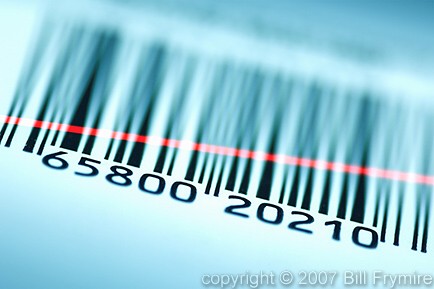The Secret Language of Barcodes
They’re on nearly every product you buy, part of the packaging or a sticker placed by retailers or suppliers…but what is a barcode and how does it work?
Did you know that the very first product purchased by scanning a UPC (Universal Product Code) was a pack of Wrigley’s Gum in 1974? The barcodes we normally see (as in the photo above) are known as 1D, and have differing widths to represent different number values that can be read by a machine – now usually a laser. Barcodes are part of a system known as AIDC or “Automatic Identification and Data Capture”.
In Canada, barcodes are obtained from GS1, who is also the provider for the US. There are many steps to getting a barcode for your product.
New companies will need to get a company prefix license. This is a set of numbers that is unique to your company. In order to obtain this license, you must register with GS1 as a member. Once you have your prefix numbers, you can assign your identification numbers. These are numbers that can be used, among many things, to tag product items and returnable assets like shipping pallets. You will use your prefix numbers along with the reference numbers you wish to tag items. Then, decide how to print your barcodes. If you will only be storing static information, you can have a company print your barcodes in bulk. If you have a product that will change over time, it is wise to print your own barcodes on demand because this will allow you to transform the data it contains.
Now you need to check the regulations for your particular product, and this will determine the size, type, placement, and quality that you need. Barcodes mostly break down into 4 categories: product packaging scanned at “point of sale” – ie: the till at the grocery or clothing store, product packaging for distribution, both packaging and distribution, and other special cases, such as medical equipment or patient tracking for healthcare facilities.
Although they are now used mostly for products, we are seeing increased usage in health care settings like hospitals, where barcodes may contain vital stats such as allergies to medicines, patient name and ward. This means that the ability of a system to scan them is even more vital, as the information could save lives. In a retail setting, the printing and formatting of barcodes is vital to a company’s bottom line, because it ensures that your product will scan properly, and show the correct information within the system.
First, select a barcode type – as an example, we will pick a regular product at retail “point of sale”, so you would use a UPC barcode. In printing, because of the graphic nature of a regular barcode, they must be reduced properly, and generally cannot be shrunk to more than 80% or enlarged more than 200% of their original width or they will not scan correctly with an omni-directional scanner. This is usually referred to as the “magnification factor”. It is not recommended that UPCs be truncated in height. Now we will format your barcode text. There is no specific font required, but it should be readable to the human eye, as these numbers act as a back-up system should the barcode be damaged an not scan correctly. The text is usually placed beneath the scan bars. Most UPC numbers are 8 or 12 digits in length, depending on the system.
This is where the fun part comes in – you can pick a colour for your barcode. Dark colours on a white background are recommended, but there are many options available. The only caveat is that the barcode should not be red, as most scanners use a red scan light, and will not be able to read red ink. Now coordinate with your packaging designer and choose where to place your barcode on the product. Always avoid placing it near a fold, under a flap, or in an otherwise obscure location that will be difficult to scan. Lastly, set up a system to check your barcode quality. Better barcodes mean more products sold at point of sale, and ensures your customer base will be fully satisfied that they can successfully purchase your product.
and feel free to add me on Google+

















